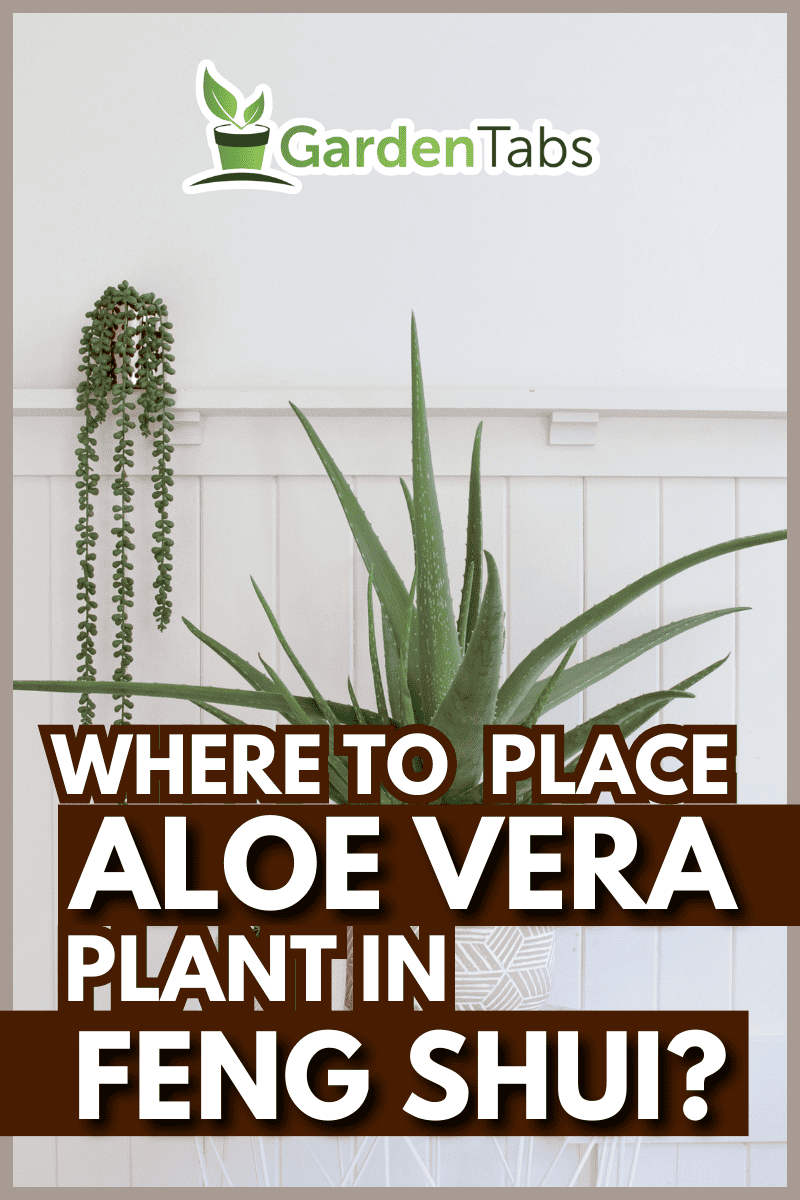Understanding the correct placement of plants within your home can be an easy way to improve its energy. Have you been studying Feng Shui but don't know where an aloe vera falls into that practice? Is there a specific spot in your house where an aloe vera should go?
We answer these questions and many others throughout this article. Let's discuss!
According to Feng Shui, you want to place an aloe vera plant within three feet of a computer or large appliance.
Considering these houseplants filter electromagnetic energy, following Feng Shui could help with any restlessness you're experiencing.
Furthermore, aloe vera is known to combat negative energy, so keeping one in a space you're always in could be helpful.
As we start, we will cover all things aloe vera and discuss where to place one following Feng Shui. Whether you're new to this practice or recently got into aloe vera, we're here to help. With that said, let's dive right into this post below!

Is Aloe Vera Good For Feng Shui?
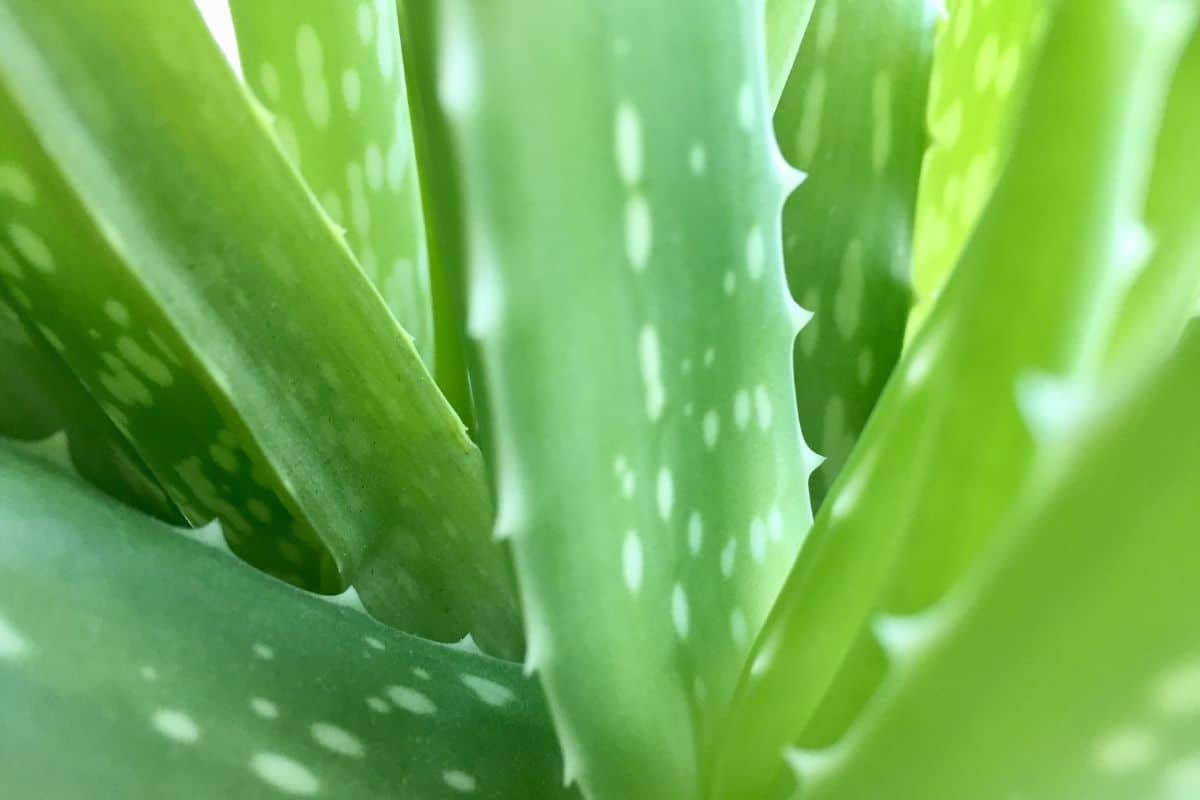
Aloe vera works perfectly for Feng Shui because this plant is known for its healing energy.
One of the many bonuses of this plant is that it "scrubs" the air clean of toxins, including formaldehyde, benzene, and carbon monoxide.
You will also find that aloe veras are antibacterial and antioxidant, so they pack a major punch. As we said above, Feng Shui recommends having your aloe vera within three feet of your computer.
Your plant will filter the electromagnetic energy and bring positivity to your workspace.
In addition, aloe vera is often put in the living room or kitchen, as those spaces are popular. In general, you want to keep a houseplant somewhere you are around most of the time, so it can give you the proper Chi you're after.
Where Should I Put An Aloe Vera Plant In My House?

Now that you know the basics of aloe vera and Feng Shui, giving your plant the right conditions is essential. Generally, aloe vera needs to be in a warm, bright window that gets at least 4-6 hours of light daily.
Even though the Feng Shui of your aloe vera is important, you also need to consider its nutrient needs. Therefore, if your home office is dark, you might want to relocate your plant to a brighter spot in the kitchen or living area.
Again, you don't have to only keep aloe vera within three feet of a computer, although doing this can be helpful. This all comes down to your house's layout and your preferences.
According to Miracle-Gro, you should place an aloe vera on a table near an east or south-facing window.
If you're in the desert/somewhere super hot, your plant may need to be further away from a window to protect it from burning.
Costa Farms Aloe Vera Live Indoor Plant
This aloe vera plant will come seven inches tall, includes a white decorative pot, prefers bright sunlight, and comes in a few sizes.


Follow this link to view it on Amazon.
How Does Feng Shui Work?
Feng Shui essentially describes the art of placing/positioning buildings, objects, space, and life to create harmony. Many home designers choose to follow this ancient practice to bring good energy and luck to their properties.
The basis of Feng Shui is that each item in your life plays a role. So, even if your aloe plant may seem minuscule, it can add to the overall energy within your house/life.
You want to create a vibe in your home that allows energy to flow freely. So, if you have things blocking this energy, you could see negative things happen.
Of course, there is no hard evidence of Feng Shui truly working, as it is more of a tradition/belief system.
Like many spiritual guidelines, Feng Shui is more about centering yourself and your belongings rather than an actual result right away.
According to QC Design School, there are five essential rules to Feng Shui:
- Be organized and tidy (this one's important).
- Keep your bed away from a window.
- Separate your work and rest spaces.
- Use the Bagua Map properly.
- Understand your colors.
For anyone wanting to learn more about the art of Feng Shui and what a Bagua Map is, you can always refer back to a "beginner's guide" or something along those lines.
Permacharts - Feng Shui Guide
This guide explains the five elements of Feng Shui, covers how to achieve proper Chi, is easy to read, and further defines the Bagua Map.


View this Feng Shui guide on Amazon.
How Long Does It Take For Feng Shui To Work?
Although this timeline can vary, most people notice a positive change in their lives within three months of starting Feng Shui.
As we said, there isn't evidence proving Feng Shui to be effective (or ineffective), so this will be different for everyone.
One of the first and most basic tasks to start doing to see better things come to fruition is regularly cleaning your windows. This is because cleaner windows let in more light, which is more positive energy.
Feng Shui describes clean windows as a gateway for more light, energy, and positivity to enter a space.
Sunlight will also showcase the various hues throughout your home, which can activate them to create harmony. Again, this is very spiritual and will work differently depending on the person.
Is Aloe Vera A Lucky Plant In Feng Shui?
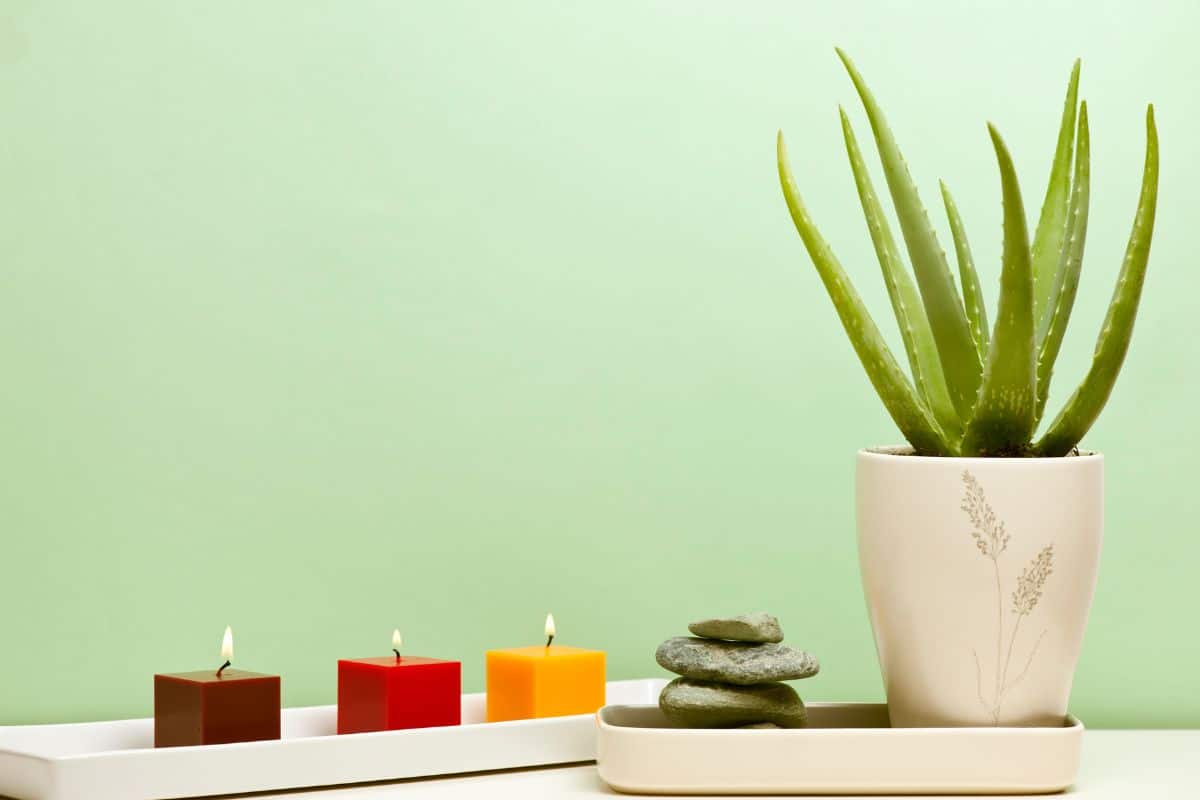
An aloe vera plant can get the ball rolling for those wanting to increase their luck.
Considering this houseplant filters negative energy and toxins from the air, yours could help increase the positive energy radiating throughout your house.
Many spiritual advisors believe that aloe vera fights off evil spirits and energy, whether it's used for Feng Shui or simply in a space.
Besides the fact your plant is healing in its design, you can also be assured it will ward off any bad energy that comes into your home.
Aloe vera is commonly used to treat burns and other skin irritation, so from a medical standpoint, having one is a good investment.
Are Aloe Vera Plants Easy To Grow?

Yes, besides having good energy, aloe vera plants are easy to grow and maintain. Raising an aloe plant will be pretty simple, as long as you give it the right conditions.
As we covered earlier, your aloe vera needs bright light. So, if you're keeping one indoors, it will need to be near a sunny, warm window space.
If the light where your plant is becomes too low, you could see it start to die. According to Feng Shui, having a sick or dying plant in your home can warrant bad energy, so this all ties together.
You also want to ensure your aloe vera has good draining soil. Since this plant is succulent, you don't need to water it often or for long periods.
This plant species is considered "stemless," meaning its leaves come from one central location. Furthermore, aloe vera is incredibly resilient, so if you cut off a piece, it will grow back.
You also don't need to prune aloe vera often (or at all), so this plant won't require much attention.
How Fast Will My Aloe Vera Grow?
Although there are many benefits to growing aloe vera, expect this plant to take its time while maturing. Typically, this species will be slow-growing, often taking four years to reach mature size.
That said, outdoor aloe vera will grow significantly faster. This is the unfortunate case for most houseplants, as they aren't exposed to all of the natural elements of an outdoor plant.
So, giving your plant as much light and nutrients as possible is essential.
You may even want to consider fertilizing an indoor aloe vera every year to speed things up, although this isn't technically required.
However, if you choose to do this, we recommend using a liquid 10-40-10 formula. You can also try a liquid houseplant fertilizer, but it's best to use one developed specifically for succulents.
Miracle-Gro Succulent Plant Food
This fertilizer works specifically for aloe vera, has a liquid formula, can go directly into the soil or mixed with water, recommends feeding every two weeks, and comes in a pack of two.


Follow this link to view it on Amazon.
How Long Do Aloe Vera Plants Live?
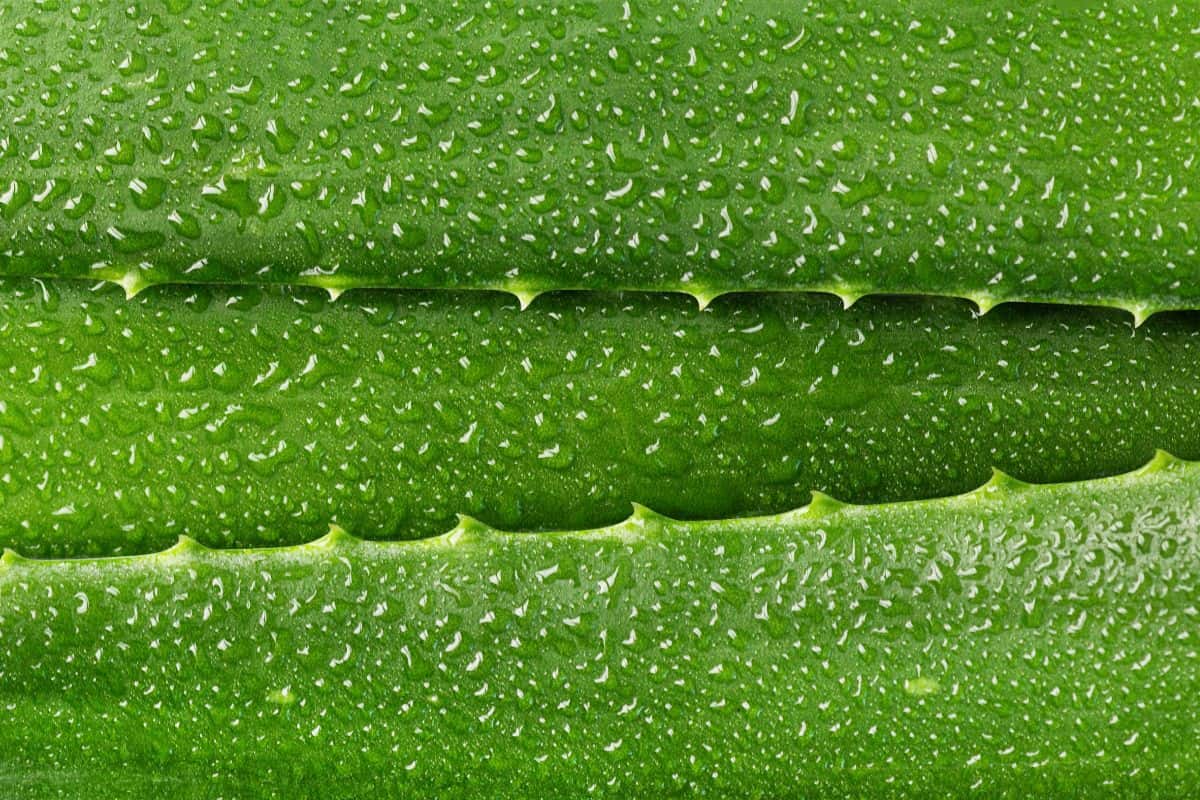
Although aloe vera is a houseplant, it can live more than a decade with proper care. Many people see their aloe vera plants live upwards of 12 years, so expect to have your plant a while.
Of course, the lifespan of aloe vera will depend on its conditions. For example, if your aloe vera doesn't get much sunlight, don't expect it to live long.
On the other hand, if your plant is in a warm, bright window, it will likely live for a longer period.
And, if you create good energy in your house using Feng Shui, this may also help your plant to live longer.
To Finish Things
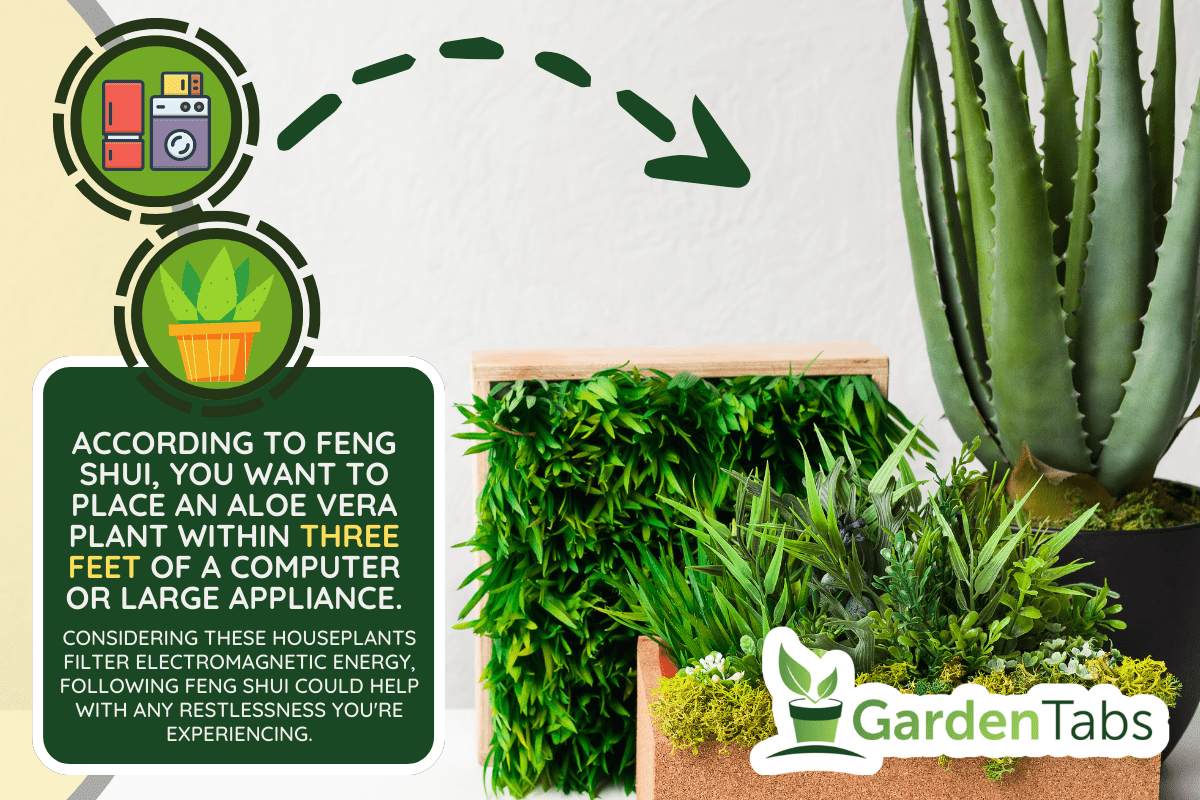
Whether you have an aloe vera or want to buy one, it's always good to understand the importance of placement. From what we found, Feng Shui recommends placing an aloe vera plant near a computer or home workspace.
Additionally, you can place your aloe vera somewhere busy, like the living room or kitchen. Considering it will clean the air of toxins and bad energy, the more you are around one, the better.
Again, Feng Shui, although not scientifically proven, has helped generations of people across the world, so it's certainly worth considering.
Made it to the end? Check out these helpful plant posts below!
Where To Place A Snake Plant In Feng Shui


